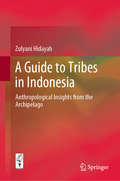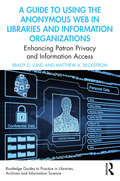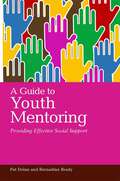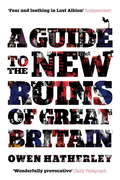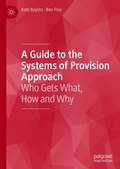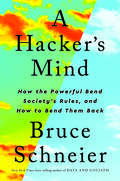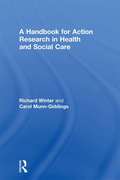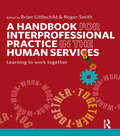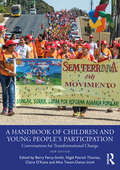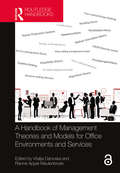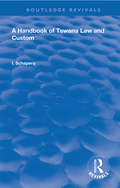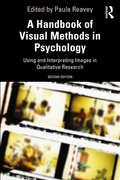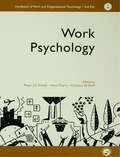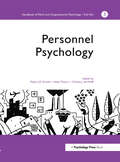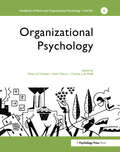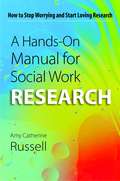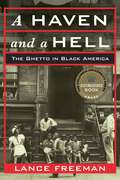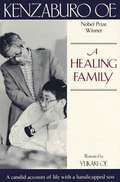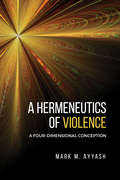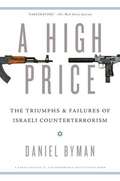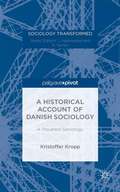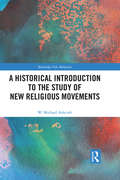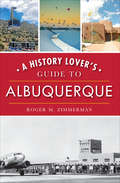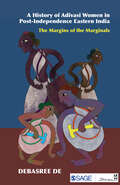- Table View
- List View
A Guide to Tribes in Indonesia: Anthropological Insights from the Archipelago
by Zulyani HidayahThis encyclopedia provides a comprehensive overview of the traditions, cultures, kinship norms, and other significant cultural aspects of the tribes, or otherwise named ethnic groups, of Indonesia, by an Indonesian anthropologist. The entries are supported by illustrations drawn by the late author himself, and are also accompanied by maps indicating the geographic locations and distributions of each tribe throughout the vast archipelago. Originally written and published in Bahasa Indonesian, the text has been translated into English and revised to feature up-to-date information. In showcasing the extent of diversity and the distinctiveness of the numerous tribal cultures in Indonesia, the volume presents itself as an important academic reference in Indonesian anthropology and ethnography studies, now finally available to global readership. Intended as a short work of reference, it will be indispensable to students and scholars researching Indonesia from anthropological, sociocultural, and ethnographic perspectives.
A Guide to Using the Anonymous Web in Libraries and Information Organizations: Enhancing Patron Privacy and Information Access (Routledge Guides to Practice in Libraries, Archives and Information Science)
by Brady D. Lund Matthew A. BeckstromA Guide to Using the Anonymous Web in Libraries and Information Organizations provides practical guidance to those who are interested in integrating the anonymous web into their services. It will be particularly useful to those seeking to promote enhanced privacy for their patrons. The book begins by explaining, in simple terms, what the anonymous web is, how it works, and its benefits for users. Lund and Beckstrom also explain why they believe access to the anonymous web should be provided in library and information organizations around the world. They describe how to provide access, as well as educate library users on how to utilize the anonymous web and navigate any challenges that might arise during implementation. The authors also encourage the development of library policies that guide appropriate conduct and filter content, where appropriate, in order to deter illegal activity. A Guide to Using the Anonymous Web in Libraries and Information Organizations reminds us that libraries and other information providers have a duty to educate and support their communities, while also preserving privacy. Demonstrating that the anonymous web can help them to fulfil these obligations, this book will be essential reading for library and information professionals working around the world.
A Guide to Youth Mentoring
by Pat Dolan Bernadine BradyYouth mentoring can be an effective way of supporting troubled youth, helping them sustain positive mental health, cope with stress, and lead successful lives through adolescence and into adulthood. This book is a comprehensive guide to youth mentoring programmes, illustrating how, if managed well, they can increase the social support available to young people. It outlines the objectives and benefits of mentoring, how it works, and how to mentor successfully. Youth mentoring in community and school settings is covered, as well as mentoring for vulnerable youth. The book illustrates different mentoring models and provides practical strategies for assessing, setting up, and monitoring the mentoring relationship and its outcomes for the young person. The challenges and difficulties associated with mentoring programmes and strategies to overcome them are also addressed. This will be an essential guide for anyone working with young people, including youth workers, social workers, residential care staff, foster carers, community development workers, teachers and community police.
A Guide to the New Ruins of Great Britain
by Owen HatherleyBack in 1997, New Labour came to power amid much talk of regenerating the inner cities left to rot under successive Conservative governments. Over the next decade, British cities became the laboratories of the new enterprise economy: glowing monuments to finance, property speculation, and the service industry--until the crash. In A Guide to the New Ruins of Great Britain, Owen Hatherley sets out to explore the wreckage--the buildings that epitomized an age of greed and aspiration. From Greenwich to Glasgow, Milton Keynes to Manchester, Hatherley maps the derelict Britain of the 2010s: from riverside apartment complexes, art galleries and amorphous interactive "centers," to shopping malls, call centers and factories turned into expensive lofts. In doing so, he provides a mordant commentary on the urban environment in which we live, work and consume. Scathing, forensic, bleakly humorous, A Guide to the New Ruins of Great Britain is a coruscating autopsy of a get-rich-quick, aspirational politics, a brilliant, architectural "state we're in."
A Guide to the Systems of Provision Approach: Who Gets What, How and Why
by Ben Fine Kate BaylissUnderstanding consumption requires looking at the systems by which goods and services are provided – not just how they are produced but the historically evolved structures, power relations and cultures within which they are located. The Systems of Provision approach provides an interdisciplinary framework for unpacking these complex issues. This book provides a comprehensive account of the Systems of Provision approach, setting out core concepts and theoretical origins alongside numerous case studies. The book combines fresh understandings of everyday consumption using examples from food, housing, and water, with implications for society’s major challenges, including inequality, climate change, and prospects for capitalism. Readers do not require prior knowledge across the subject matter covered but the text remains significant for accomplished researchers and policymakers, especially those interested in the messy real world realities underpinning who gets what, how, and why across public and private provision in global, national, and historical contexts.
A Hacker's Mind: How the Powerful Bend Society's Rules, and How to Bend them Back
by Bruce SchneierIt’s not just computers—hacking is everywhere. Legendary cybersecurity expert and New York Times best-selling author Bruce Schneier reveals how using a hacker’s mindset can change how you think about your life and the world. A hack is any means of subverting a system’s rules in unintended ways. The tax code isn’t computer code, but a series of complex formulas. It has vulnerabilities; we call them “loopholes.” We call exploits “tax avoidance strategies.” And there is an entire industry of “black hat” hackers intent on finding exploitable loopholes in the tax code. We call them accountants and tax attorneys. In A Hacker’s Mind, Bruce Schneier takes hacking out of the world of computing and uses it to analyze the systems that underpin our society: from tax laws to financial markets to politics. He reveals an array of powerful actors whose hacks bend our economic, political, and legal systems to their advantage, at the expense of everyone else. Once you learn how to notice hacks, you’ll start seeing them everywhere—and you’ll never look at the world the same way again. Almost all systems have loopholes, and this is by design. Because if you can take advantage of them, the rules no longer apply to you. Unchecked, these hacks threaten to upend our financial markets, weaken our democracy, and even affect the way we think. And when artificial intelligence starts thinking like a hacker—at inhuman speed and scale—the results could be catastrophic. But for those who would don the “white hat,” we can understand the hacking mindset and rebuild our economic, political, and legal systems to counter those who would exploit our society. And we can harness artificial intelligence to improve existing systems, predict and defend against hacks, and realize a more equitable world.
A Handbook for Action Research in Health and Social Care
by Richard Winter Carol Munn-GiddingsAction research is a form of research closely linked to practice which can readily be undertaken by practitioners and service users. This handbook offers a comprehensive guide to action research as a strategy for inquiry and development in health and social care. It can be used by individuals or groups working independently on their own projects or as a basis for a tutor-led course. It features* an introduction to the theories behind action research and other forms of research related to it*lively case studies from social work, nursing, mental health care and community work* a step-by-step study guide.The theoretical section of the book provides a general definition of action research, compares action research with other forms of social research, outlines the nature of a 'culture of inquiry' in the workplace, and describes the links between action research and service-user research, management,community development, evaluation, reflective practice, feminist research and anti-racist research.This practical study guide covers issues such as preparing a proposal, ethics and principles of procedure, gathering and analysing data, writing a report, the links between action research and critical reflection. It will be particularly useful for groups wishing to undertake action research on an independent basis
A Handbook for Interprofessional Practice in the Human Services: Learning to Work Together
by Roger Smith Brian LittlechildA Handbook for Inter-professional Practice in the Human Services: Learning to Work Together is an essential text for all students of inter-professional education, and for practitioners looking to understand and develop better inter-agency working. With an emphasis on working collaboratively with fellow professionals, service users and the community, and developing an holistic approach to working, this is an essential resource for anyone studying on courses in social work, nursing, education, health, medicine, social policy, physiotherapy, occupational therapy, physiotherapy and dentistry, and for all those with an interest in the human services.
A Handbook of Children and Young People’s Participation: Conversations for Transformational Change
by Afua Twum-Danso Imoh Barry Percy-Smith Nigel Patrick Thomas Claire O’KaneThis new edition of A Handbook of Children and Young People’s Participation brings together work from research and practice to reflect on some of the key developments in the field since the first edition published in 2010. Subtitled ‘Conversations for Transformational Change’, the collection focuses on both ongoing and new discourses that enable us to advance thinking and practice to better understand what it means for participation to be transformational. Featuring all new content, it explores the developments that have been achieved in theory and practice in the last decade as well as the challenges and, indeed, the limitations of dominant participation approaches with children and young people in achieving genuine societal transformation. A key feature of the Handbook is the inclusion of young people as co-authors in many of the chapters. Foregrounding aspects of participation as experienced by diverse groups of children and young people, the book especially illuminates the experiences and perspectives of participation relating to groups of children who face particular challenges, such as displaced children and children living with disabilities and young people from indigenous groups in a range of contexts. The broad spectrum of debates that the text covers will be invaluable in challenging and transforming thinking and practice for a wide range of scholars, practitioners, activists and young people themselves. It will additionally be suitable for use on a wide range of courses including childhood and youth studies, sociology, law, political studies, community development, development studies, children’s rights, citizenship studies, education and social work.
A Handbook of Dispute Resolution: ADR in Action
by Karl J. MackieA Handbook of Dispute Resolution examines the theoretical and practical developments that are transforming the practice of lawyers and other professionals engaged in settling disputes, grievance-handling and litigation. The book explains what distinguishes ADR from other forms of dispute resolution and examines the role ADR can play in a range of contexts where litigation would once have been the only option, such as family law and company law. In some areas, like industrial relations, ADR is not an alternative, but the main method of conflict-intervention, and several contributors draw on their experience of negotiating between management and unions. A wide variety of methods is open to the non-litigious, including resort to Ombudsmen, negotiation, small claims courts and mini-trials; these and other options receive detailed attention. Given the newness of ADR as a discipline, questions about the training of mediators and about the role of central government have not yet been resolved. The final section of the book is devoted to discussion of these issues. Case studies are drawn from the international arena - examples from China, Canada, Australia, Germany and North America place ADR in a cultural and historical perspective.
A Handbook of Management Theories and Models for Office Environments and Services
by Rianne Appel-Meulenbroek Vitalija DanivskaAlthough workplace design and management are gaining more and more attention from modern organizations, workplace research is still very fragmented and spread across multiple disciplines in academia. There are several books on the market related to workplaces, facility management (FM), and corporate real estate management (CREM) disciplines, but few open up a theoretical and practical discussion across multiple theories from different disciplines. Therefore, workplace researchers are not aware of all the angles from which workplace management and effects of workplace design on employees has been or could be studied. A lot of knowledge is lost between disciplines, and sadly, many insights do not reach workplace managers in practice. Therefore, this new book series is started by associate professor Rianne Appel-Meulenbroek (Eindhoven University of Technology, the Netherlands) and postdoc researcher Vitalija Danivska (Aalto University, Finland) as editors, published by Routledge. It is titled ‘Transdisciplinary Workplace Research and Management’ because it bundles important research insights from different disciplinary fields and shows its relevance for both academic workplace research and workplace management in practice. The books will address the complexity of the transdisciplinary angle necessary to solve ongoing workplace-related issues in practice, such as knowledge worker productivity, office use, and more strategic management. In addition, the editors work towards further collaboration and integration of the necessary disciplines for further development of the workplace field in research and in practice. This book series is relevant for workplace experts both in academia and industry. This second book in the series focuses on the role of workplace management in the organization and the tasks that workplace management needs to consider. The 18 theories that are presented in this book and applied to workplace research discuss management aspects from the organization’s perspective or dive deeper into issues related to people and/or building management. They all emphasize that workplace management is a complex matter that requires more strategic attention in order to add value for various stakeholders. The final chapter of the book describes a first step towards integrating the presented theories into an interdisciplinary framework for developing a grand workplace management theory.
A Handbook of Tswana Law and Custom (Routledge Revivals)
by I. SchaperaOriginally published in 1938, the primary object of this book was to place on record, for the information and guidance of government officials and of the Tswana themselves, the traditional and modern laws and related customs of the Tswana tribes of the Bechuanaland Protectorate. The author was invited in 1934 by the Administration of the Protectorate to undertake the compilation of such a record and the book does not pretend to give a complete account of Tswana life, but deals only with those aspects which may be regarded as falling within the province of tribal law.
A Handbook of Visual Methods in Psychology: Using and Interpreting Images in Qualitative Research
by Paula ReaveyThis comprehensive volume explores the set of theoretical, methodological, ethical and analytical issues that shape the ways in which visual qualitative research is conducted in psychology. Using visual data such as film making, social media analyses, photography and model making, the book uniquely uses visual qualitative methods to broaden our understanding of experience and subjectivity. In recent years, visual research has seen a growing emphasis on the importance of culture in experience-based qualitative methods. Featuring contributors from diverse research backgrounds including narrative psychology, personal construct theory and psychoanalysis, the book examines the potential for visual methods in psychology. In each chapter of the book, the contributors explore and address how a visual approach has contributed to existing social and psychological theory in their line of research. The book provides up-to-date insights into combining methods to create new multi-modal methodologies, and analyses these with psychology-specific questions in mind. It covers topics such as sexuality, identity, group processes, child development, forensic psychology, race and gender, and would be the ideal companion for those studying or undertaking research in disciplines like psychology, sociology and gender studies.
A Handbook of Work and Organizational Psychology: Volume 2: Work Psychology (Handbook Of Work And Organizational Psychology Ser. #Vol. 3)
by Henk Thierry Pieter J.D. Drenth Charles J. de WolffWork Psychology, the second volume of the Handbook of Work and Organizational Psychology, concentrates on issues related to the direct relationship between the worker and the organization and on his or her task or function. This could be termed the classical tradition of work psychology, including human factors, psychology and ergonomics. This volume provides a comprehensive update on new issues and studies in this core area. Subjects like safety, occupational stress, workload and absenteeism due to sickness are tackled. Chapters discuss particular types of workers on whom psychologists have focused attention more recently: the older worker, the unemployed, and the foreign worker. Moving away somewhat from the 'micro-world' of the individual worker, models of human economic behaviour and the development of social indicator systems are also explored.
A Handbook of Work and Organizational Psychology: Volume 3: Personnel Psychology (Handbook Of Work And Organizational Psychology Ser. #Vol. 3)
by Henk Thierry Pieter J.D. Drenth Charles J. de WolffPersonnel Psychology (or Human Resource Management) examines individual differences and their consequences for the organization. Attention is paid to choice processes, abilities and capabilities, needs and need fulfilment, commitment, selection methods, career development, appraisal and training. The focus of personnel psychology is the satisfactory relationship between the employee and the organization, and takes in all the elements influencing this relationship ranging from the traditional area of personnel selection to recent considerations, such as conflict between client demands and government regulations, restriction of output, job evaluation practices, and industrial unrest.
A Handbook of Work and Organizational Psychology: Volume 4: Organizational Psychology (Handbook Of Work And Organizational Psychology Ser. #Vol. 3)
by Henk Thierry Pieter J.D. Drenth Charles J. de WolffOrganizational processes and the organization-environment interaction are discussed in this volume of the Handbook of Work and Organizational Psychology. Both organizational and environmental characteristics affect the behaviour of individuals and groups, but such characteristics are in turn also influenced by behavioural features. This volume on organizational psychology covers subject areas such as organization theory, organizational culture and change, leadership, decision making and participation, motivation and satisfaction, payment systems, effective communication, and social-organizational aspects of automation. The final chapter describes the impact upon behaviour and attitudes of the transition of a socialist-led society to a market economy.
A Hands-on Manual For Social Work Research: How To Stop Worrying And Start Loving Research
by Amy Catherine RussellA hands-on approach to teaching research that overcomes the resistance of the most apprehensive student.
A Haven and a Hell: The Ghetto in Black America
by Lance FreemanThe black ghetto is thought of as a place of urban decay and social disarray. Like the historical ghetto of Venice, it is perceived as a space of confinement, one imposed on black America by whites. It is the home of a marginalized underclass and a sign of the depth of American segregation. Yet while black urban neighborhoods have suffered from institutional racism and economic neglect, they have also been places of refuge and community.In A Haven and a Hell, Lance Freeman examines how the ghetto shaped black America and black America shaped the ghetto. Freeman traces the evolving role of predominantly black neighborhoods in northern cities from the late nineteenth century through the present day. At times, the ghetto promised the freedom to build black social institutions and political power. At others, it suppressed and further stigmatized African Americans. Freeman reveals the forces that caused the ghetto’s role as haven or hell to wax and wane, spanning the Great Migration, mid-century opportunities, the eruptions of the sixties, the challenges of the seventies and eighties, and present-day issues of mass incarceration, the subprime crisis, and gentrification. Offering timely planning and policy recommendations based in this history, A Haven and a Hell provides a powerful new understanding of urban black communities at a time when the future of many inner-city neighborhoods appears uncertain.
A Healing Family: A Candid Account of Life with a Handicapped Son
by Stephen Snyder Kenzaburo OëA Healing Family, Kenzaburo Oë's first book since winning the Nobel Prize for Literature, is an intimate portrait of the people closest to him. Above all, it is about his son Hikari. Hikari was born in 1963 with a growth on his brain so large it made him look as if he had two heads. His parents were told he might never be more than a "human vegetable" requiring constant care; but they took the decision to raise him. Today, despite autism, poor vision, and a tendency to seizures, their son is an established composer with two successful CDs to his credit. Oë has often written about the sorrows and satisfactions of being the parent of a handicapped child, most memorably in A Personal Matter; but nowhere has his writing been more personal, more buoyant, more revealing than in this non-fiction work. Without diminishing the suffering that Hikari and his family have been through, he celebrates the victories that can be won, especially his son's gift for music--his own "language." Friends make an appearance along the way--doctors, musicians, other writers--as do the themes that have preoccupied Oë all his life: the rights of the underprivileged; the moral authority of the survivors of the atomic bombing; the mystery of language. But his thoughts keep circling back to his family--to the healing power of the family, and the unwitting courage we can all find in ourselves.
A Hermeneutics of Violence: A Four-Dimensional Conception
by Mark M. AyyashAttention to the elusiveness of violence opens up a rich landscape of analysis, whereby social scientists can examine the often-overlooked transformative dimensions of violent acts. Theories of violence are numerous today, but because of the mysterious nature of violence, and how each individual or group may endure it uniquely, its study cannot be limited to one specialized and highly restricted field. A Hermeneutics of Violence seeks to remedy this problem by placing in dialogue various theories of violence from the disciplines of anthropology, sociology, international relations, and philosophy. This study uses a four-dimensional lens to examine the many facets of violence, including its instrumental, linguistic, mimetic, and transcendental dimensions. Far from irreconcilable, these positions, when placed within a four-dimensional outlook, open up new avenues for the study of particular cases of violence. Exploring the complex interactions, for instance, of "enemy-siblings," Mark M. Ayyash reveals "postures of incommensurability" that continuously produce conflictual positions across a spectrum of time and space and demand the release of violence. The book concludes that these postures must be understood and deconstructed before we can have a legitimate chance to achieve peace and justice, the conceptions of which must come with the intent of not necessarily opposing violence but rather replacing our conceptions of what the violences have come to constitute as "real."
A High Price: The Triumphs and Failures of Israeli Counterterrorism
by Daniel BymanThe product of painstaking research and countless interviews, A High Price offers a nuanced, definitive historical account of Israel's bold but often failed efforts to fight terrorist groups. Beginning with the violent border disputes that emerged after Israel's founding in 1948, Daniel Byman charts the rise of Yasir Arafat's Fatah and leftist groups such as the Popular Front for the Liberation of Palestine--organizations that ushered in the era of international terrorism epitomized by the 1972 hostage-taking at the Munich Olympics. Byman reveals how Israel fought these groups and others, such as Hamas, in the decades that follow, with particular attention to the grinding and painful struggle during the second intifada. Israel's debacles in Lebanon against groups like the Lebanese Hizballah are examined in-depth, as is the country's problematic response to Jewish terrorist groups that have struck at Arabs and Israelis seeking peace. In surveying Israel's response to terror, the author points to the coups of shadowy Israeli intelligence services, the much-emulated use of defensive measures such as sky marshals on airplanes, and the role of controversial techniques such as targeted killings and the security barrier that separates Israel from Palestinian areas. Equally instructive are the shortcomings that have undermined Israel's counterterrorism goals, including a disregard for long-term planning and a failure to recognize the long-term political repercussions of counterterrorism tactics.
A Historical Account of Danish Sociology: A Troubled Sociology (Sociology Transformed)
by Kristoffer KroppThis book provides the first English-language account of the history of Danish sociology, examining it from the late 19th century to the present day. Focusing on the discipline's struggle for recognition in Denmark, it is a case study of how sociological knowledge has entered into ever-changing coalitions with welfare state bureaucracies.
A Historical Introduction to the Study of New Religious Movements (Routledge New Religions)
by W. Michael AshcraftThe American public’s perception of New Religious Movements (NRMs) as fundamentally harmful cults stems from the "anticult" movement of the 1970s, which gave a sometimes hysterical and often distorted image of NRMs to the media. At the same time, academics pioneered a new field, studying these same NRMs from sociological and historical perspectives. They offered an interpretation that ran counter to that of the anticult movement. For these scholars in the new field of NRM studies, NRMs were legitimate religions deserving of those freedoms granted to established religions. Those scholars in NRM studies continued to evolve methods and theories to study NRMs. This book tells their story. Each chapter begins with a biography of a key person involved in studying NRMs. The narrative unfolds chronologically, beginning with late nineteenth- and early-twentieth century perceptions of religions alternative to the mainstream. Then the focus shifts to those early efforts, in the 1960s and 1970s, to comprehend the growing phenomena of cults or NRMs using the tools of academic disciplines. The book’s midpoint is a chapter that looks closely at the scholarship of the anticult movement, and from there moves forward in time to the present, highlighting themes in the study of NRMs like violence, gender, and reflexive ethnography. No other book has used the scholars of NRMs as the focus for a study in this way. The material in this volume is, therefore, a fascinating viewpoint from which to explore the origins of this vibrant academic community, as well as analyse the practice of Religious Studies more generally.
A History Lover's Guide to Albuquerque
by Roger M. ZimmermanA landmark-by-landmark tour of New Mexico&’s largest city, with photos and facts on its fascinating past. This tour of Albuquerque, New Mexico, goes beyond the traditional guidebook to offer a historical journal detailing an area rich with diverse cultures and dramatic events. The journey through time starts with the settlement of Native Americans in pueblos along the Rio Grande and then initiatives by Spain to settle and convert the region. Visit Old Town Plaza, where trade from the El Camino Real and Santa Fe Trails flourished. Look around lesser-known sites, including railroad depot facilities, major military landmarks and nostalgic Route 66. Join local history expert Roger Zimmerman as he carefully curates an expedition through each era of Albuquerque&’s history and its most beloved sites
A History of Adivasi Women in Post-Independence Eastern India: The Margins of the Marginals
by Debasree DeA history of the historyless, and the marginalization of adivasi voices. A History of Adivasi Women in Post-Independence Eastern India is a path-breaking book that explores the current status of adivasi women in the four states of eastern India with high percentages of adivasis—Bihar, Jharkhand, Odisha and West Bengal. Debasree De engages with the recent paradigm of ‘development and displacement’ and adivasi women’s marginalization and cultural silencing. The findings in the book are based on extensive field surveys in teagardens, stone crushing sites, brick kilns and construction industries. Further, the book provides new material on the extremist villages of Jangal Mahal, Koraput, Malkangiri and Niyamgiri Hills. Linking tribe and gender, the author elaborates how forest economy is women’s economy; forcible eviction by multinationals for new industries has led to severe displacement and poverty, apart from intensification of witch hunting and trafficking of girls.
